People usually speak to me about Detroit in terms of cars, Motown and/or crime. In recent times, the Motor City has added another resume builder - blight. So much is this the case that when many people hear the word "blight", "Detroit" follows immediately. Internationally recognized for its architecture, Detroit has allowed many of its prized buildings to fall into disrepair and so inspire photographers to chronicle the Demise of Detroit. The symbol for this decay is Michigan Central Depot, a Beaux Arts building constructed in 1913. Not more than a handful of miles from Hart Plaza to the east and the Ambassador Bridge within sight to the south (yes, Windsor is south of Detroit), this 18 storey behemoth is awe inspiring even in its current state.
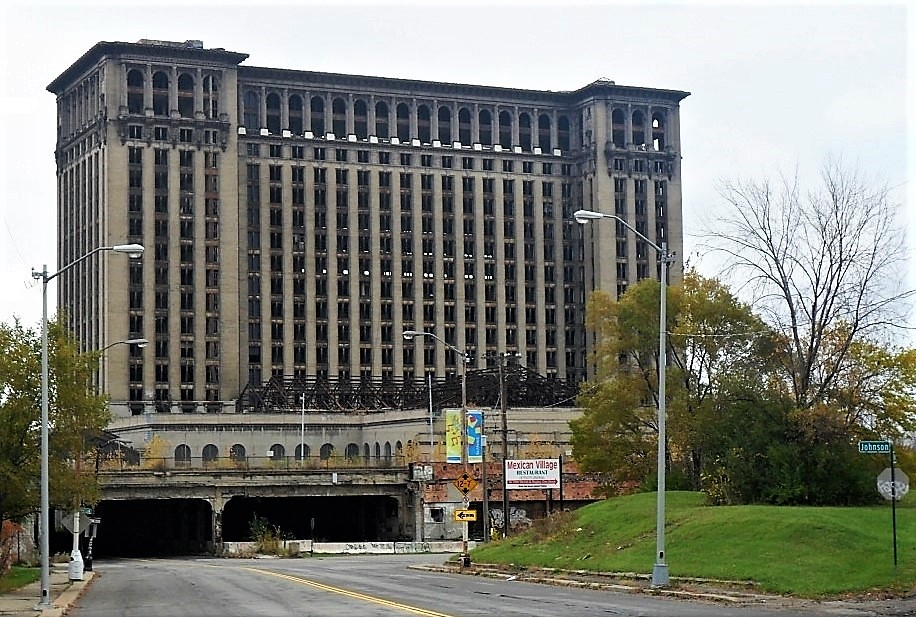
What is most remarkable about this journey to Comerica Park is my mate Craig had never laid eyes on the structure before. It was a special treat on the way to Tiger bars when the game was played at the Corner of Michigan and Trumbull. It is quite something to think 50,000 plus fans used to jam into Tiger Stadium. It doesn't seem plausible that many people could fit onto the empty lot which is all that remains of the once treasured home of the Tigers. When the city insisted on tearing down the building it effectively ripped out the heart of Corktown and left the area for dead. Yet a few Tiger bars remain and these are where I do my before and after libations when taking in a game.
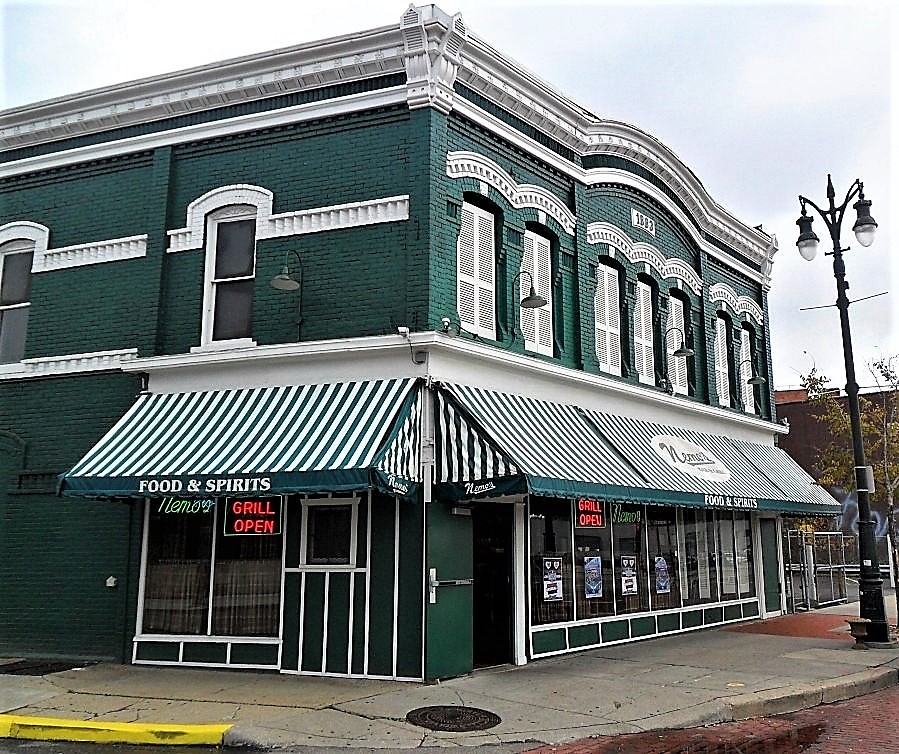
A burger and a few Blues later, we are on the shuttle to Comerica for game 4 of the American League Pennant Series (call me old fashioned) against the seemingly always favoured Yankees. At stake is a place in the World Series. The aforementioned mate - aka Nader; he's as American as any Syrian can be

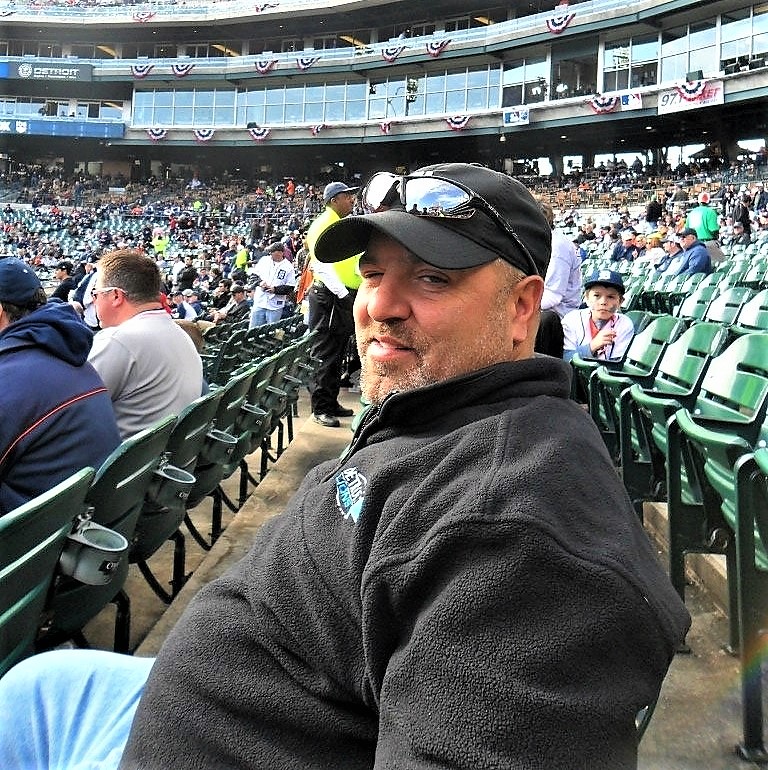
Play ball. The large Renaissance inspired Kahn design on the left is the Detroit Athletic Club - celebrating its 125 year anniversary this year.
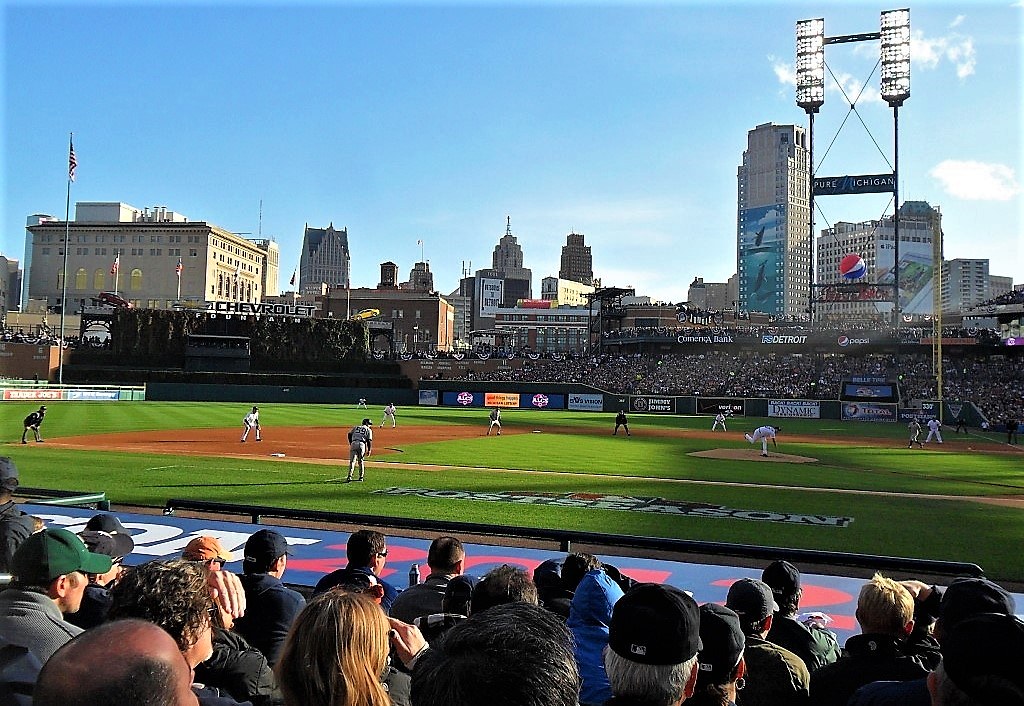
The outcome was never in doubt, but all good things must come to an end...
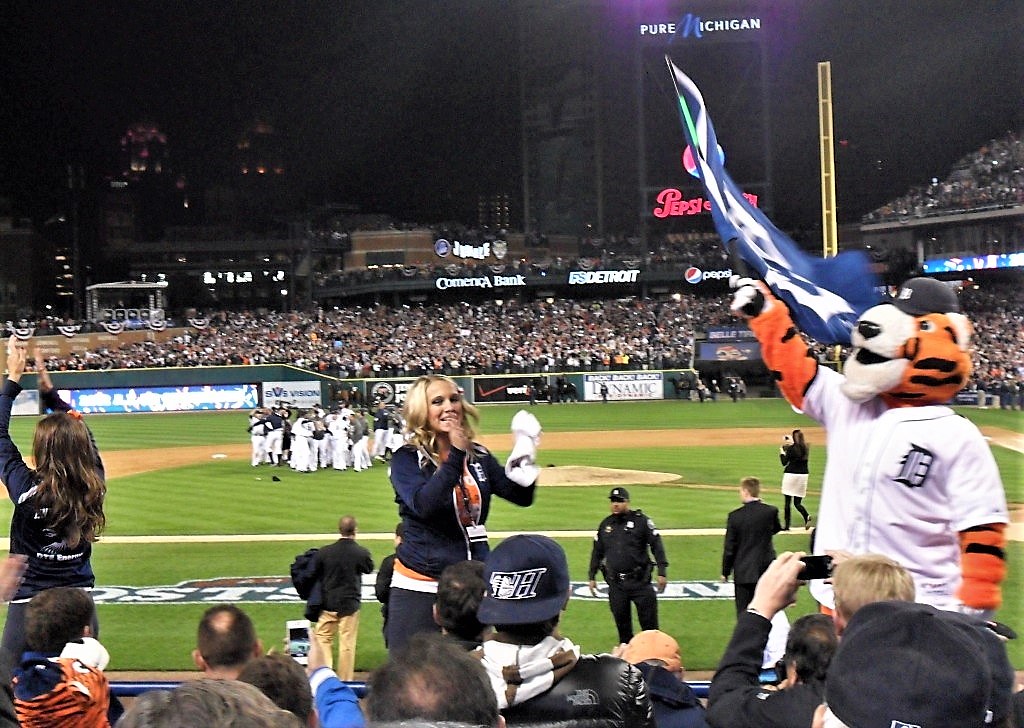
but in my case, despite being a bit bleary-eyed and feeling like breakfast would do more harm than good, I was up early for a game at Birmingham Country Club. See link for Birmingham CC tour.
www.golfclubatlas.com/forum/index.php/topic,63580.msg1513956.html#msg1513956 
The next day its back to Detroit to make a few critical stops whenever I am in Michigan.
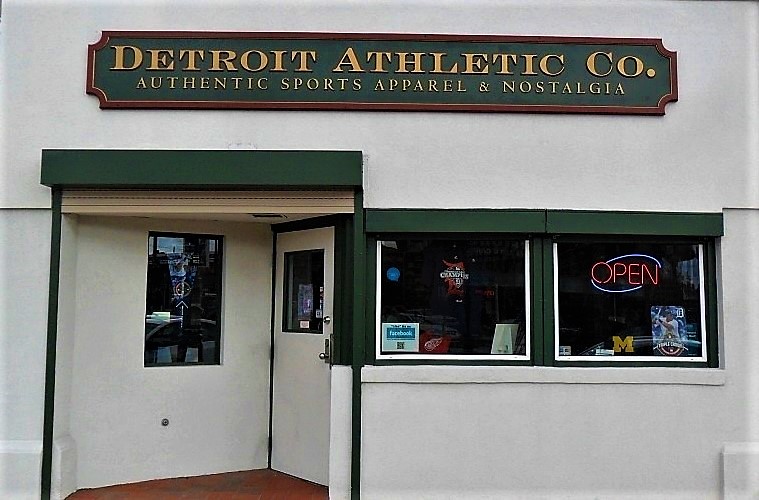
Downtown next for a visit to the Institution. I can't imagine what life would be like in Detroit without coney dogs.
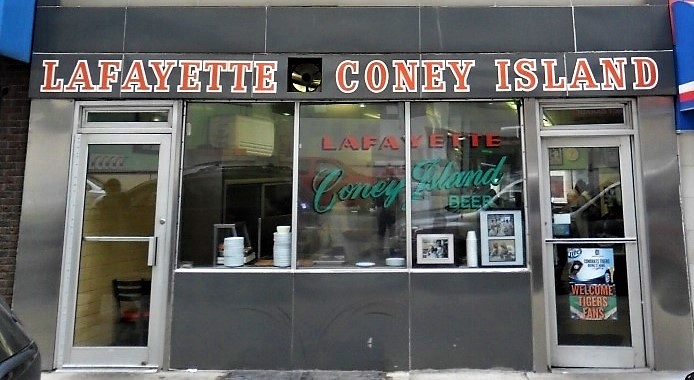
Finally, up to Midtown to drink terrible beer in a suspect, but lovable bar - The Old Miami. The Cass Corridor has been cleaned up, but the owners of this place don't know it. Before heading north I usually stop in at the Cafe.
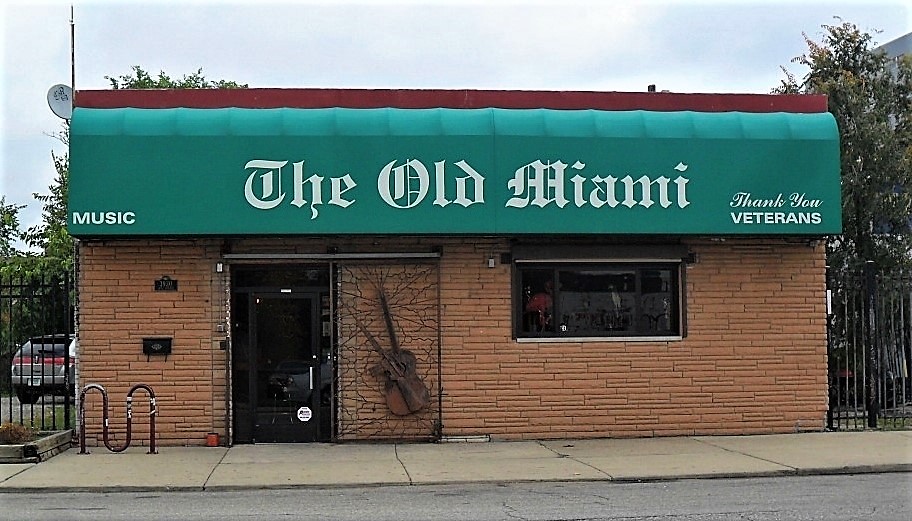
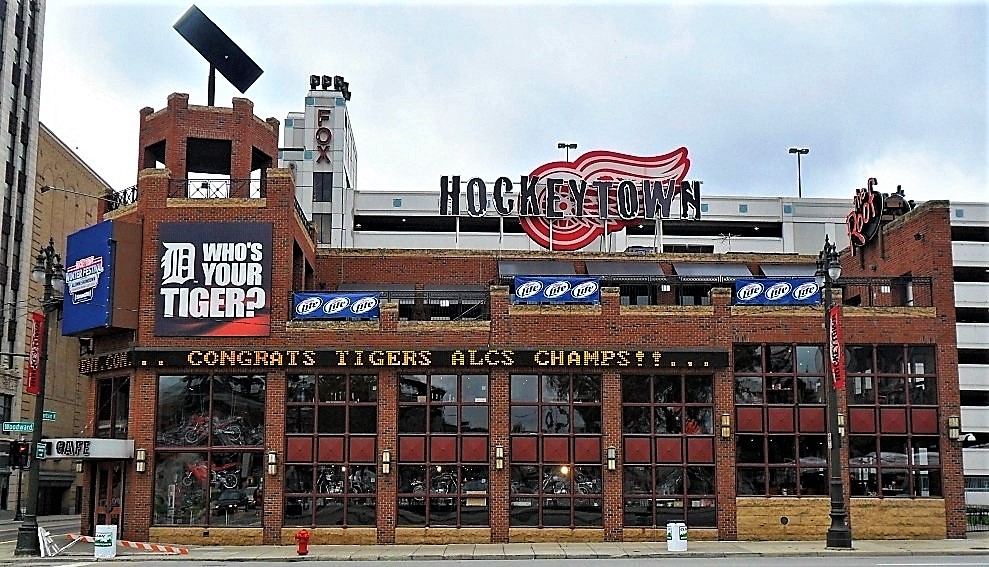
The last game of the trip took me about 4 miles south and west of Birmingham CC, the other side of Telegraph. Like Crystal Downs, Franklin Hills is a little known design for many Michiganders. After teething problems at an earlier site in Redford (Redford CC), it is thought the club insisted Ross invest more personal time on the Franklin Hills project. Among the Jewish community, Franklin Hills is well known because the club is a direct descendant of the Phoenix Club which was a Jewish social club established in 1872. By 1905 the club was on its third city premises and desired to have a country club to compliment its city club. A 9 hole course designed by Tom Bendelow was established and eventually the club decided that golf should be self sustaining, thus Redford CC (later a city of Detroit municipal called Rogell then privately owned as New Rogell and now closed) was born. A year later, in 1921, Donald Ross was called in to build a second nine and convert the sand greens to grass. It was quickly realized that the land hard on the Rouge River was unsuitable for ideal golf (the drainage issues were never resolved). Additionally, long closed Edgewater (amusement) Park was slated to be opened directly across the street from Redford CC, thus spoiling the country appeal of the club. Consequently, a new site in Franklin (the village is in Southfield Township, but the course is in Farmington Hills), some 20 miles northwest of Detroit, was selected as optimal land to build Franklin Hills. The course was designed by Donald Ross and was to opened in 1927. Club member, the famous architect, Albert Khan (aka Architect of Detroit), was commisioned to build the clubhouse. While vibrant, Frankiln Hills is tucked away in a secluded area and many Detroiters don't know of its existence.
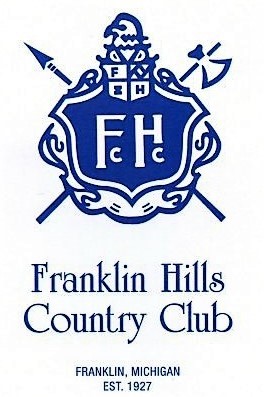
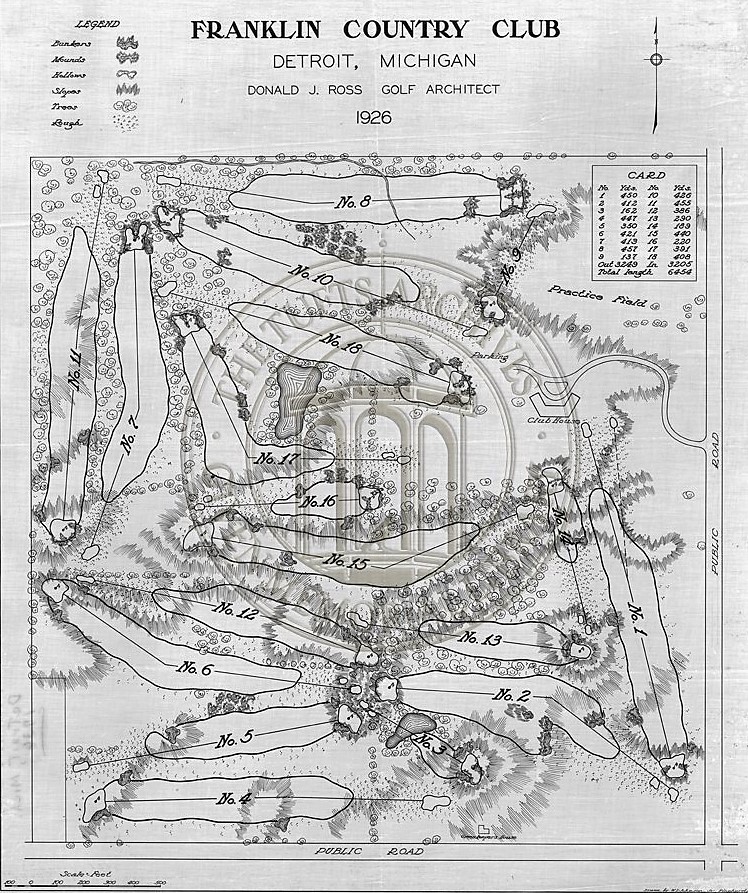
When entering the property one is immediately seduced by the practice ground to the right and the course to the left. Indeed, the first hole sets the tone early for what is a special course. A rolling par 4 of 400+ yards with deep bunkers either side of the fairway and a large green. While there is plenty of elevation change, at no time does it feel as though the course is overly hilly. The 2nd hole seems to play less than its listed yardage though with blind water down the left and bunkering, there is plenty of danger.
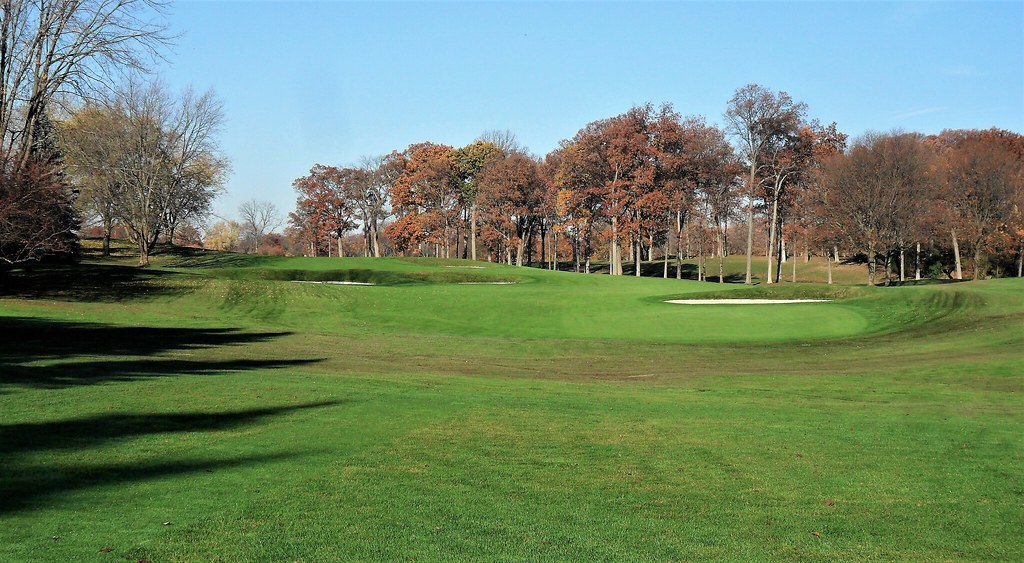
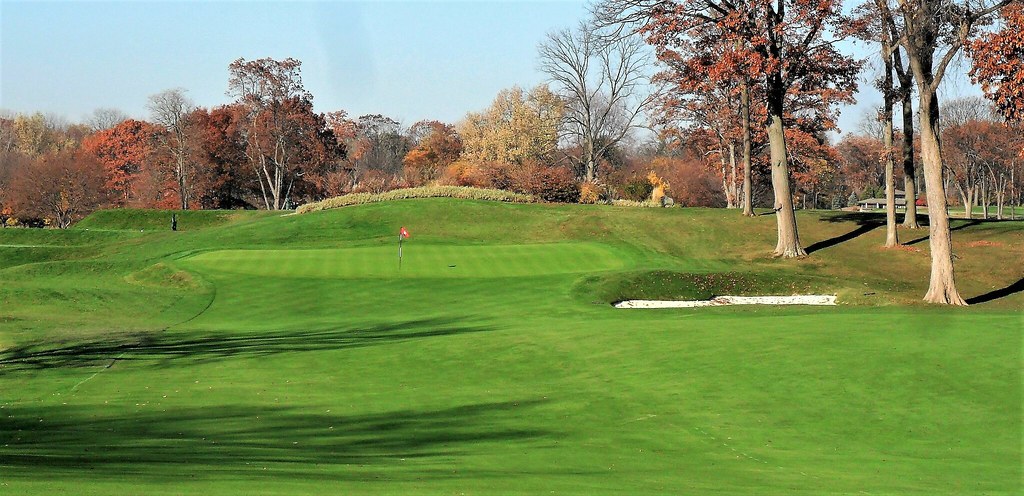
A very good par 3, the third features a plateau green. #4 is a dead straight par 5. #5 is a handsome two-shotter with its shelf green built off the hill for the 6th tee. Notice the top-shot bunker- this feature is highlighted on a few holes.
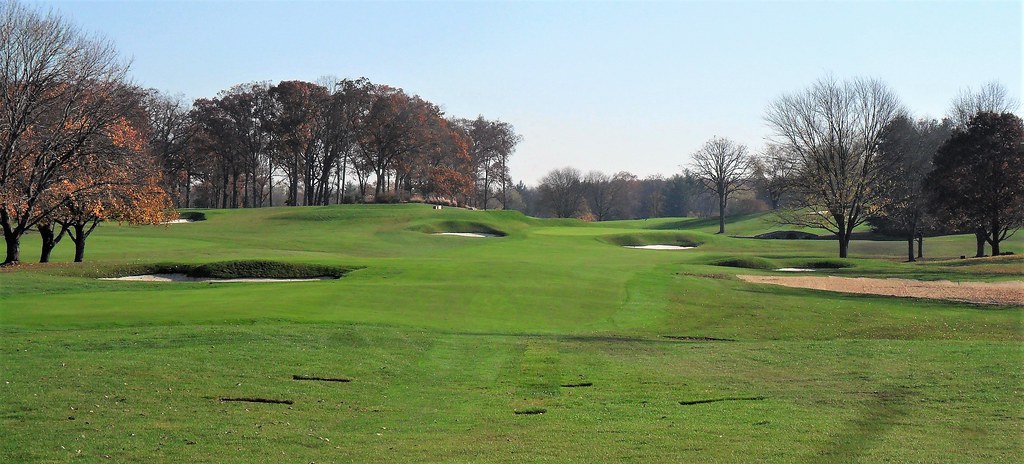
A brute of a par 4, but the 6th is still a very good hole. Now the course changes its complexion by heading into a more treed area of the property. The 7th is a long par 4 playing uphill after the tee shot - a par here is very well earned.
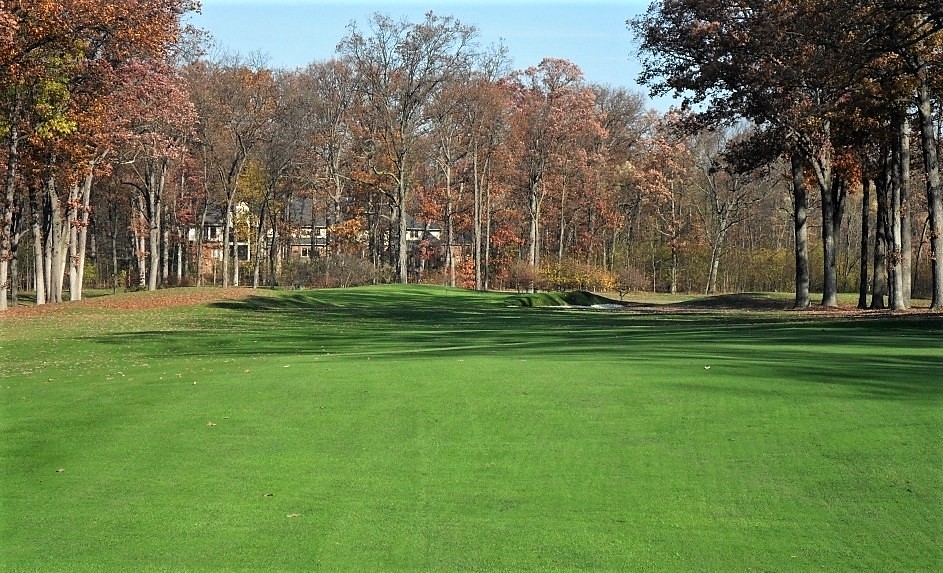
Eight too is a shortish par 5 which doesn't become interesting until approaching the green. If I had to pick a weakness of Franklin Hills it would certainly be the par 5s, although I believe the back nine has two good examples of the type.
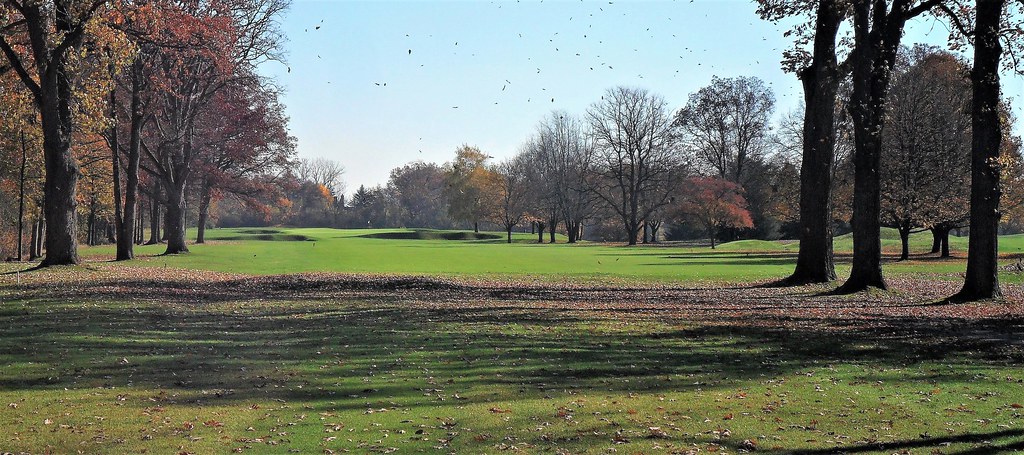
Perhaps the best putting surface on the front nine of a surprisingly sedate set of greens, the par 3 ninth packs a powerful punch.
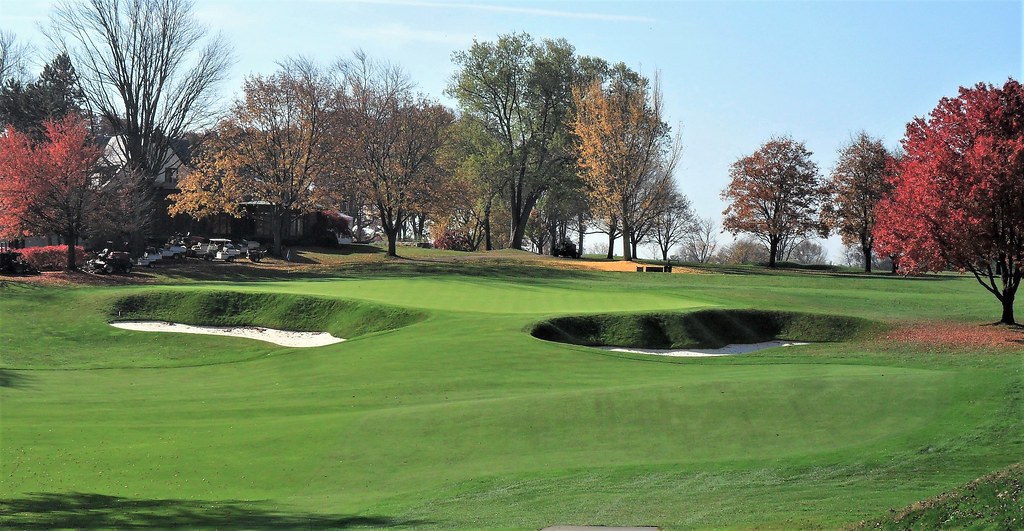
The 10th offers no advance preview for the diabolical uphill 11th. The drive falls away to the right and through a fairly tight corridor of trees.
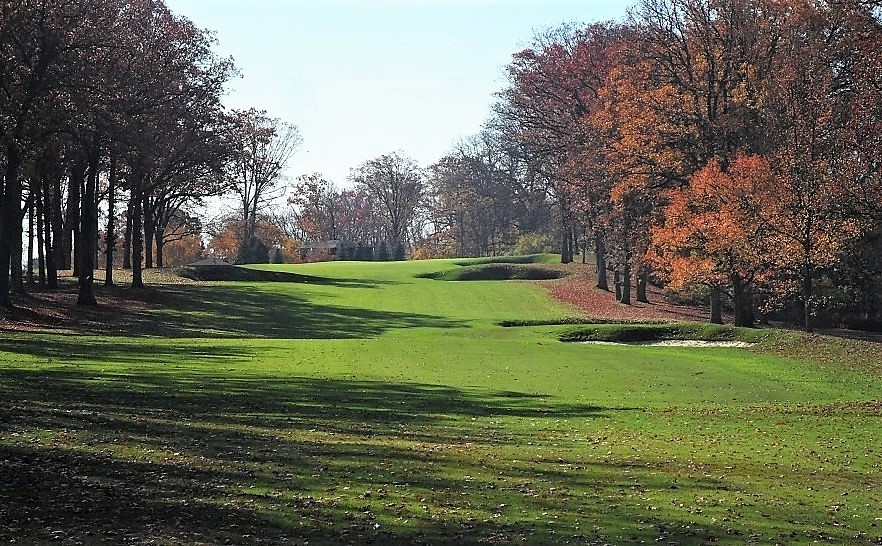
Emerging from the trees, #12 begs the golfer to drive the upper tier of the fairway to leave a fully visible green.
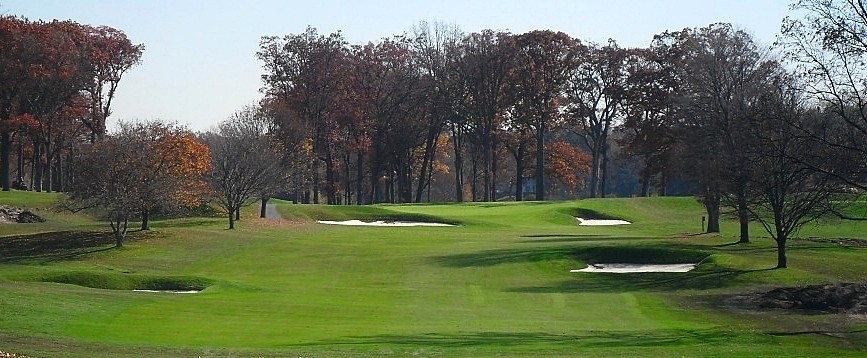
Emphasizing a volcano green which is incredibly small, the diminutive 13th is one of my favourite holes on the course and the surprise hole of the trip.
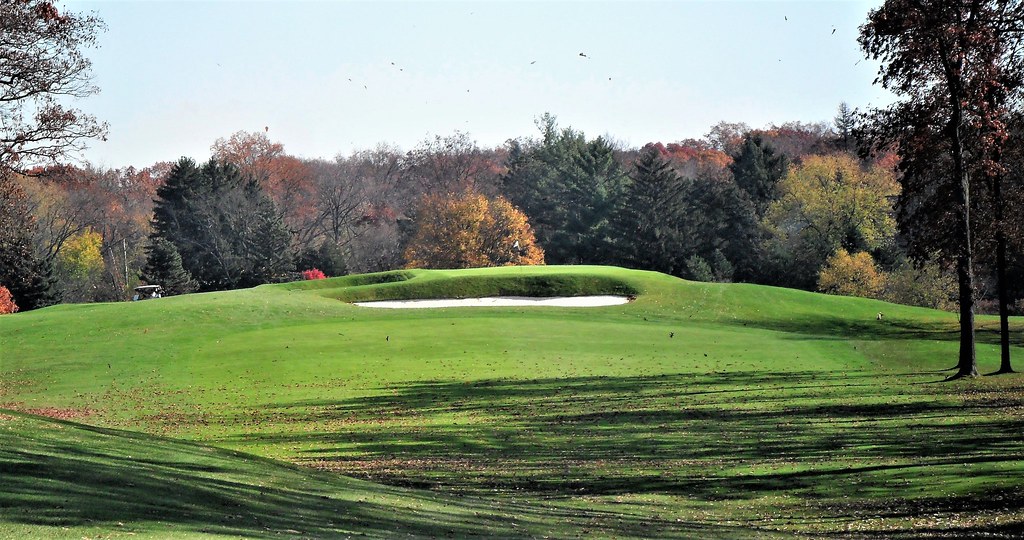
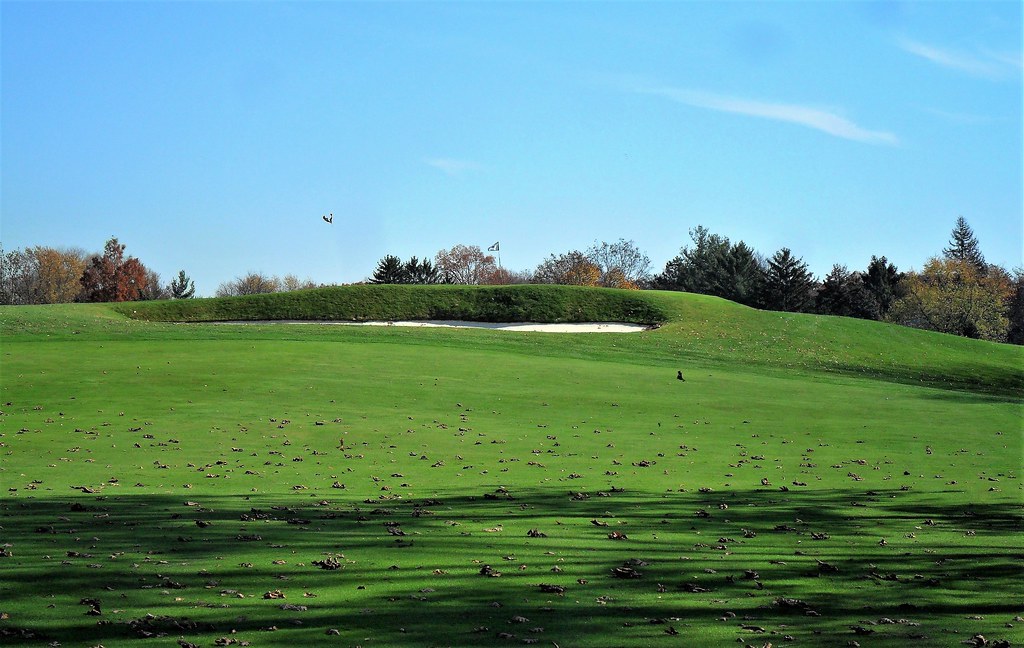
The downhill 14, a longish par 3.
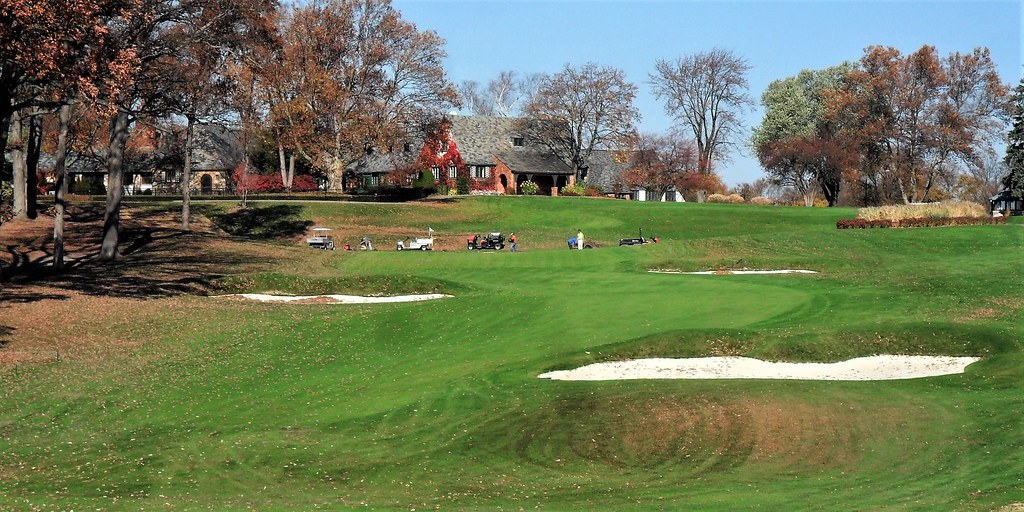
The best par 5 was saved for last, though the hole may play better as a par 4 with some work. The hole turns left and is reachable.
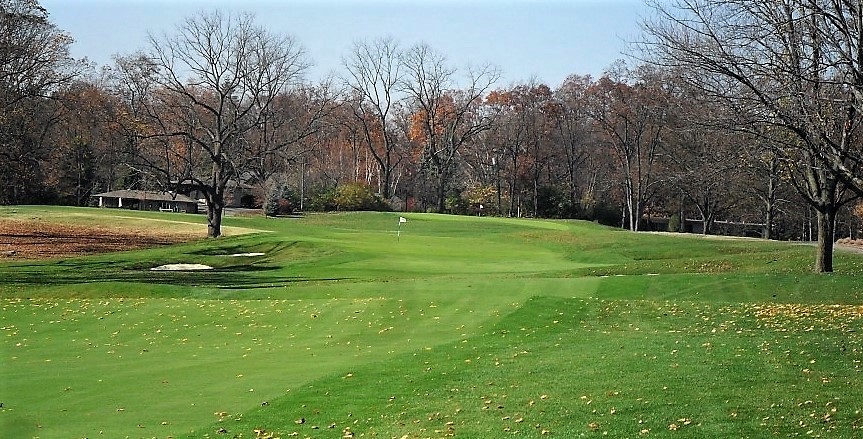
The long par 3 sixteenth is visually an odd hole. The cart path cuts in from the right and the green is not a well defined target. #17 too is aesthetically compromised, but once one sees the hole in reverse the option of driving over the water is more clear. If one is taking the left route it will likely be necessary to lay-up. If the right route is an option be careful to accurately judge the wind over open water.
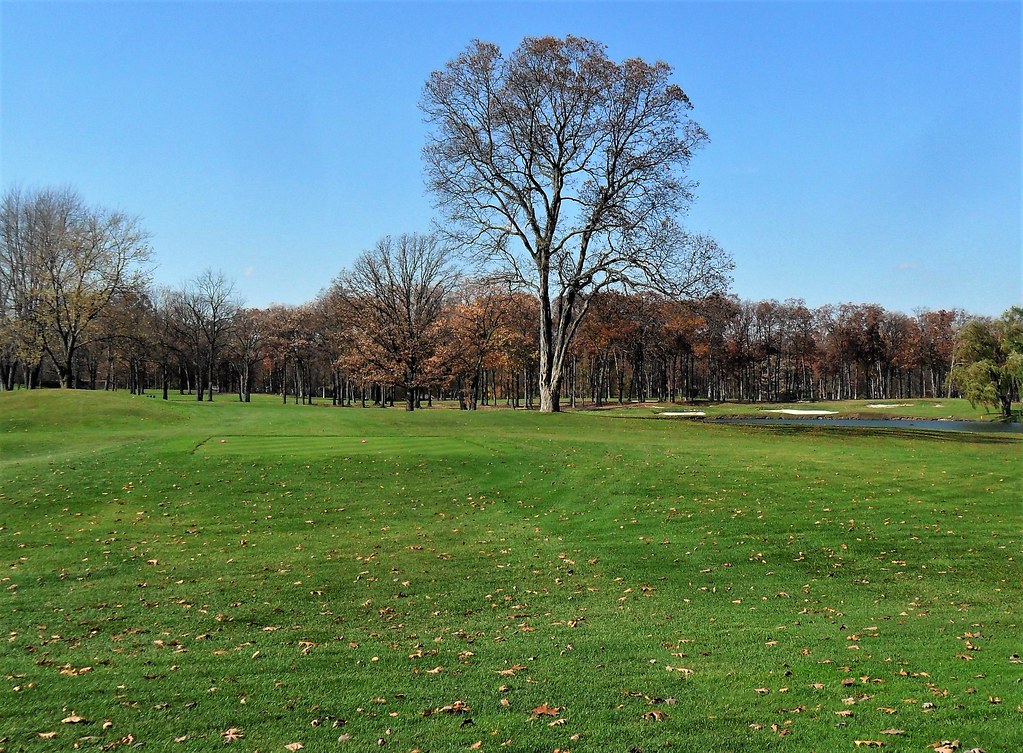
The long approach after a lay-up.
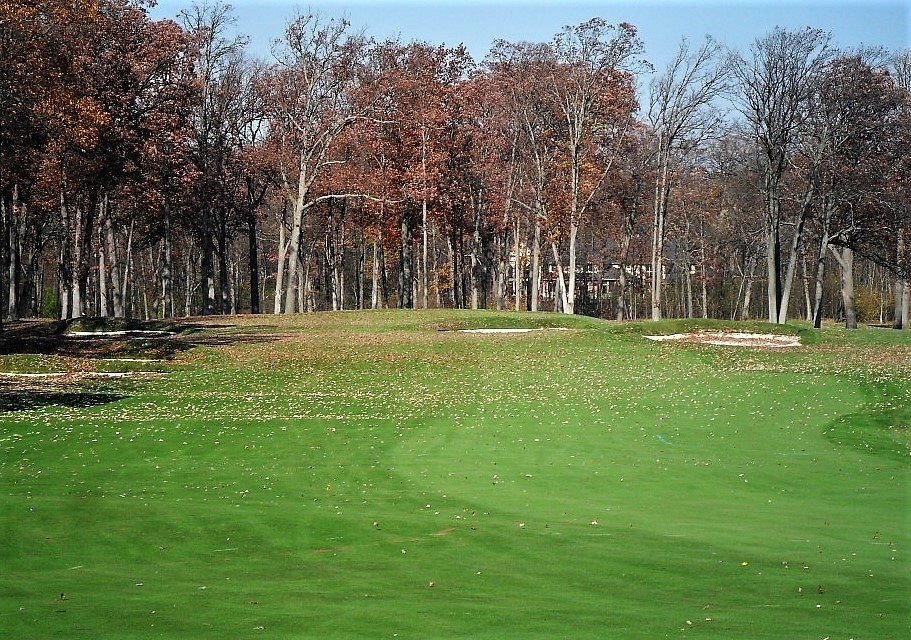
The home hole plays between sentinel trees and the bunker down the left is reachable despite visual evidence to the contrary.
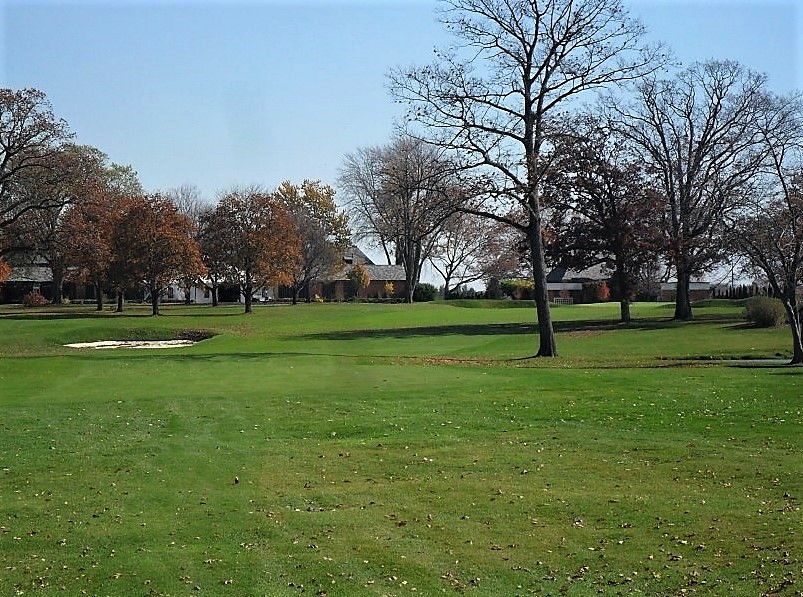
The biggest surprise for me was the lack of movement in the greens. I thought Franklin Hills would feature rolling greens such as at Oakland Hills or Grosse Ile. That isn't to say the green aren't interesting, just not quite as entertaining as a few other Ross courses in the Detroit area. I think the star of the show, and this is usually the case for Ross, are the par 4s. There is great variety with the thirteenth being a throwback hole not easily matched in the Detroit area. The mostly open nature of the design helps to create a serene parkland feel yet with a sense of space. I enjoyed the course immensely and would cherish a return visit. 2012 1*
Birmingham CC
www.golfclubatlas.com/forum/index.php/topic,63580.msg1514178.html#msg1514178Orchard Lake CC
www.golfclubatlas.com/forum/index.php/topic,61798.msg1469133.html#msg1469133Ciao